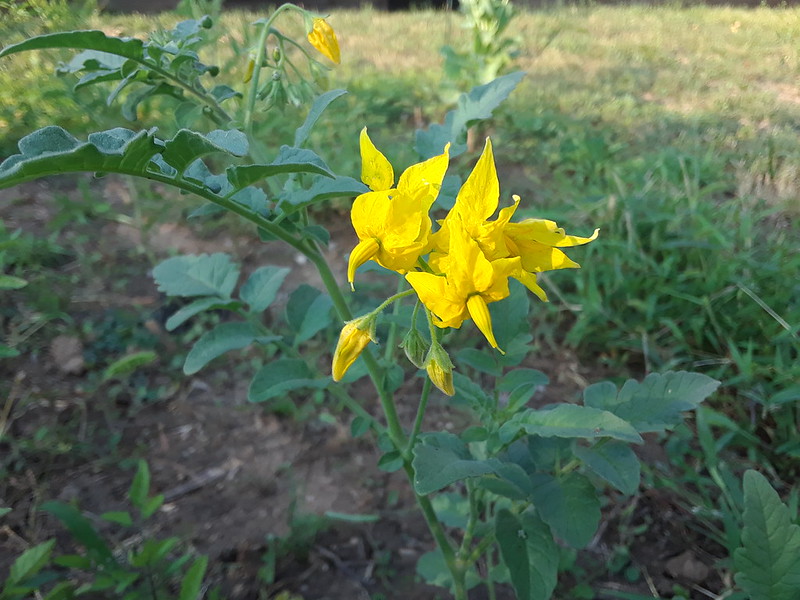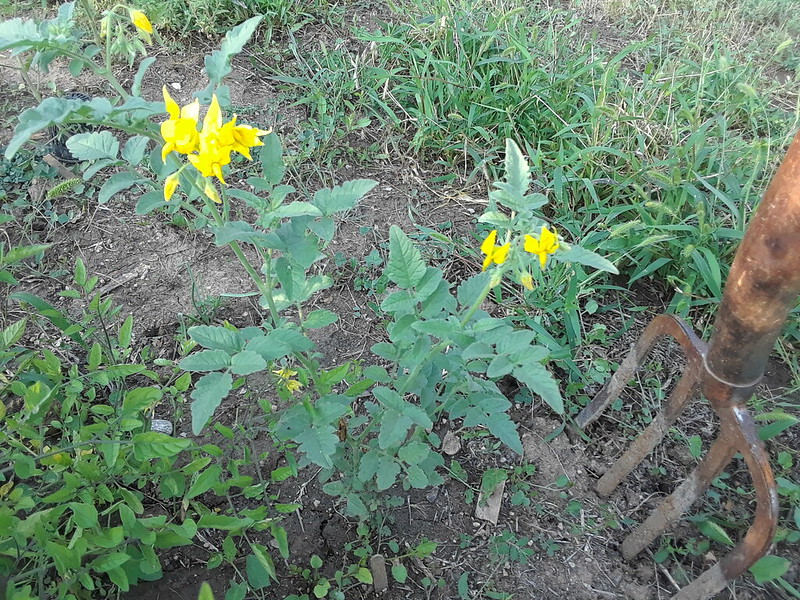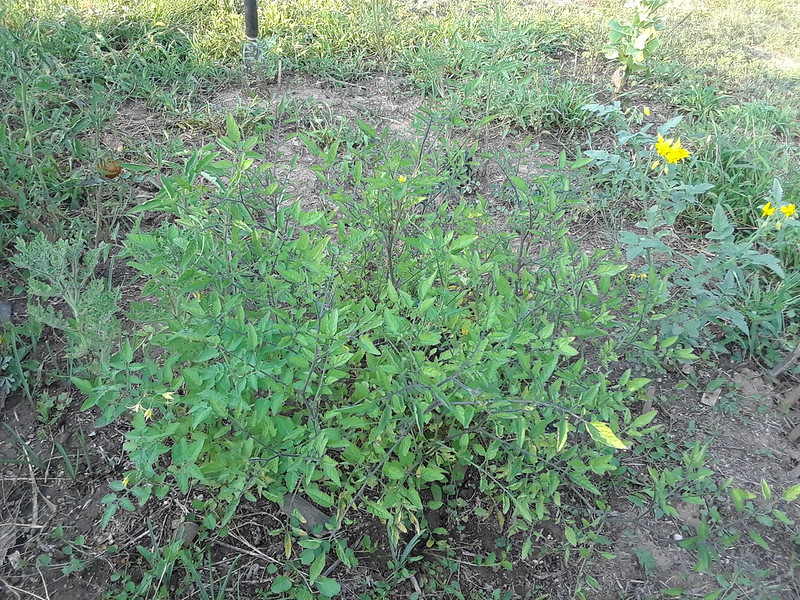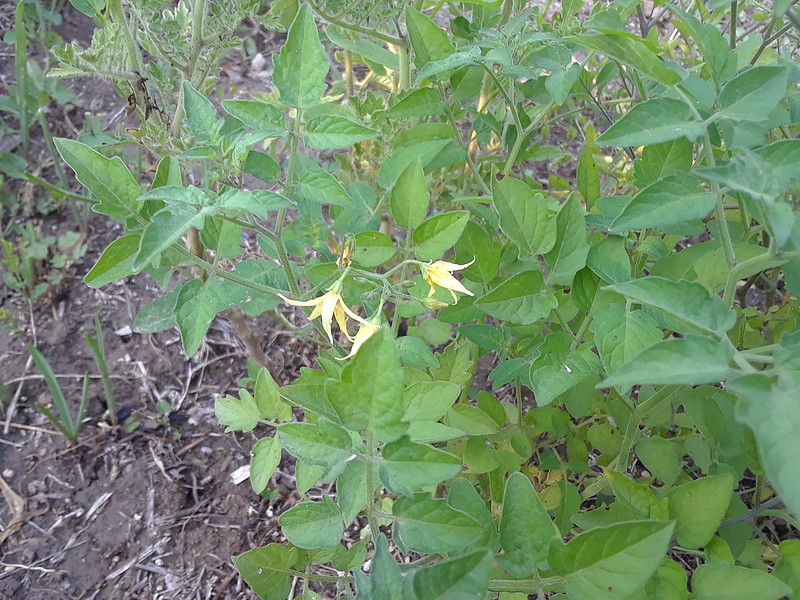|
|
Post by keen101 (Biolumo / Andrew B.) on Aug 7, 2018 16:26:24 GMT -5
P.s. i was not referring to predicting children fruit sizes but rather the idea that if a fruit is larger on a plant than the ones around it on the same plant that it is more likely to be cross pollinated with hybrid seed.
I seem to remember reading it when tomato purists said not to save those to help ensure inbred purity. But i can't find info to back it up. I also vaguely remember someone saying that the earliest or maybe the latest ones were also more likely to be crosses. But im even more iffy on that.
|
|
|
|
Post by keen101 (Biolumo / Andrew B.) on Aug 7, 2018 16:34:11 GMT -5
I have a suspicion that earlier plants, extremely robust plants, smaller fruits, red fruits, and larger fruits are more likely to be hybrids When I started I picked always the fleshiest fruits ( like the beeftype) of every plants just because I thought it will push selection towards the beeftype. It turns out it was only a wish and not reality of course as I now know. But it turns out that I had a lot of hybrids that way. |
|
|
|
Post by Joseph Lofthouse on Aug 7, 2018 20:48:54 GMT -5
The earliest flowers on tomato plants can sometimes be fasciated. When that happens the anther cone is all jumbled up, and the style is exposed, thus making the flowers more susceptible to cross pollination. The fruits also end up with more locules, and are therefore larger than fruits produced from normal flowers later on.
At least in my garden, the longer the tomato plants flower, the more pollinators are attracted to them, therefore increasing the chances of cross pollination. Populations of bumblebees keep increasing all summer long. And the digger bees become active later in the season.
|
|
|
|
Post by Joseph Lofthouse on Aug 7, 2018 21:07:22 GMT -5
I took photos of the interspecies tomatoes. I think that these are self-compatible, because they set lots of fruit before the pollinators were active in the tomato patch. F2 fruits of [Domestic X LA1777]. They are growing in the general population on huge indeterminate plants.  I think that these are self-incompatible. They only set fruit early in the season if I attempted manual pollinations on them. They are super early. The plant started out determinate, but then sent out indeterminate shoots. What the heck? They have an exerted stigma. They are growing in the Best-of-best patch. F2 fruits of [Domestic X solanum habrochaites]. So far, this one plant has produced more fruits than the combined output of a couple hundred interspecies hybrids. The pollen that was available for attempted manual pollination early in the season was F2:[Domestic X Solanum pennellii], so some of these seeds might be three species hybrids: [[Domestic X habrochaites]X[Domestic X pennellii]].  These have open anther cones, and exerted stigmas. They are F2 fruits of [Domestic X Solanum pennellii]. All the plants have pennellii-type leaves and green fruits, perhaps with yellow tones.  |
|
|
|
Post by imgrimmer on Aug 8, 2018 7:27:38 GMT -5
|
|
|
|
Post by Joseph Lofthouse on Aug 8, 2018 13:33:49 GMT -5
I am really suffering right now... I was out in the interspecies tomato patch harvesting fruits, and tasting them. One of the fruits was super-nasty bitter. Ugh!!!! Spitting. Feels like I ate a raw green potato. Gag.
|
|
|
|
Post by keen101 (Biolumo / Andrew B.) on Aug 9, 2018 13:26:47 GMT -5
I am really suffering right now... I was out in the interspecies tomato patch harvesting fruits, and tasting them. One of the fruits was super-nasty bitter. Ugh!!!! Spitting. Feels like I ate a raw green potato. Gag. Oh man! Yeah, i suppose it's sorta luck of the draw how those traits segregate out. Do you have any idea how dominant bitter taste genetics are? Im not even sure if it follows mendelian segregation even. I was just curious if it is completely random or not or whether once a plant has a sufficient amount of domestic genetics if bitterness could reappear later down that line or not. |
|
|
|
Post by walt on Aug 9, 2018 14:09:21 GMT -5
If you want facts, skip this post. But if guesses are OK, read on.
A bad taste could come from a substance coded for by a gene new to domestic tomatoes, or it could come from an incomplete substance that, if completed, would be part of the normal flavor. The former would likely be a dominant gene, the latter would likely be recessive. I'd bet on dominant. Any takers?
Of course the above would be based on single genes, and actually either could be the result of several genes.
|
|
|
|
Post by keen101 (Biolumo / Andrew B.) on Aug 18, 2018 19:17:54 GMT -5
Can i just say i really LOVE these flowers!! I really hope that S. peruvianum hybrids can be produced and these kind of bright showy flower clumps can become standard for a domestic-like tomato. I say domestic-like because i realize that no longer is this project just content on introgressing a few wild tomato genes into a domestic population of tomatoes like standard tomato breeding has been doing up till now, but rather mixing and blending whole genomes together creating blurred lines on species and clades. Which is Awesome!  Wild tomato patch 2018 Wild tomato patch 2018 by Andrew Barney, on Flickr S. peruvianum (close up)  Wild tomato patch 2018 Wild tomato patch 2018 by Andrew Barney, on Flickr Same plant but whole plant. Notice it is very close to S. cheesmaniae and S. galapagense. (and some volunteer tomatoes that may be S. pennellii hybrids)  Wild tomato patch 2018 Wild tomato patch 2018 by Andrew Barney, on Flickr S. galapagense (far left), S. cheesmaniae (middle and sprawling growth habit), S. peruvinaum (right).  Wild tomato patch 2018 Wild tomato patch 2018 by Andrew Barney, on Flickr unattractive pale flowers of S. cheesmaniae. |
|
|
|
Post by Joseph Lofthouse on Aug 19, 2018 15:11:15 GMT -5
Going the other way to 3/4 wild- BC1 hasn't done anything exciting for me yet. Maybe a fruit or two. Looks like habrochaites so far- I only got hab type leaves. This summer I gave plants to a bunch of neighbors which were one S habrochaites, one F2:[domestic X pennellii], and one F2:[domestic X habrochaites]. I inspected one of those plantings this week. The pennellii cross died. The flowers don't show any bruising like they get when bumblebees have been visiting. The domestic X habrochaites has an exerted stigma, but no fruit set, seeming to indicate that it is self-incompatible. I found two fruits on the S habrochaites plant. Perhaps a BC1? Perhaps a break-down of self-incompatibility? I harvested 7 fruits from a S pennellii plant that was grown away from other S pennellii, but with F2:[domestic x habrochaites] or F2:[domestic X pennellii], or S peruvianum, or S corneliomulleri as possible pollen donors. Guess that I'll check for seeds in a week or so. I'm likewise not finding many seeds in the inter-species hybrid fruits. Enough to continue the project, but not near as many as I had been hoping for, compared to the quantity of fruits that I have harvested. Fruits that I hand pollinated early in the season were much seedier than mid-season fruits that were allowed natural pollination. Nevertheless, I've been harvesting fruits and eating them! So I must feel like I have sufficient seed. The fruity and sweet flavors have been really pleasing to me!!!!!!!!!!! It's hard to leave them alone. |
|
|
|
Post by keen101 (Biolumo / Andrew B.) on Aug 20, 2018 13:26:54 GMT -5
. Nevertheless, I've been harvesting fruits and eating them! So I must feel like I have sufficient seed. The fruity and sweet flavors have been really pleasing to me!!!!!!!!!!! It's hard to leave them alone.  that makes me smile. Good to hear! Sounds like this project is already having success early on. Im both surprised and not surprised to hear of all the new flavors you are finding in these crosses. Surprising to hear some of the pennelli recombinants taste well enough, most were not all that appetizing in the F1 and the green color is somewhat off putting. Lol. I also really like your idea that simple selection could improve edibility in some of the harder to cross undomesticated species like peruvianum. Why not domesticate them? I say sure! |
|
|
|
Post by keen101 (Biolumo / Andrew B.) on Aug 20, 2018 21:04:45 GMT -5
If S. Chilense has been used as a bridge before for crossing in S. Peruvianum, it would sure be nice to grow it. In searching online it looks like Joseph grew it last year but got no fruit. True. I think i have some seed for it from Sacred Succulents. When i tried growing it the first time i had lots of trouble with it. I also did not get any flowers or fruit. ...but.. my LA1996 (of which i need to send you seed!!) Has S. Chilense in it's ancestry. It is a wonderful tomato that i believe still had some wild genes in it. Perhaps it can be used as a bridge itself...?? Send me a pm to remind me with your address |
|
|
|
Post by imgrimmer on Aug 21, 2018 2:43:38 GMT -5
this might help? It seems temperature data are scaled by a factor... as I understand it.
|
|
|
|
Post by imgrimmer on Aug 23, 2018 5:58:13 GMT -5
Today I visited my pennelli hybrid plants again. Last time hand pollination seemed not to work. I pollinated again.
I watched the plants for a while all bees and bumblebees are interested in every other kind of flower but not in pennelli tomatos. I saw bumblebees on domestic tomatoes not often but once in a while.
I wonder if european native bumblebees aren`t interested in these tomatoes...
|
|
|
|
Post by keen101 (Biolumo / Andrew B.) on Aug 23, 2018 7:55:14 GMT -5
Today I visited my pennelli hybrid plants again. Last time hand pollination seemed not to work. I pollinated again. I watched the plants for a while all bees and bumblebees are interested in every other kind of flower but not in pennelli tomatos. I saw bumblebees on domestic tomatoes not often but once in a while. I wonder if european native bumblebees aren`t interested in these tomatoes... Last year the F1s were not the most attractive at first but later on decently attractive to the two bumble bees later. But the one next to the Peruvianum plant had more visits than the others. The Peruvian would attract the bee first and then sometimes they would visit the pennellii F1. The one F2 i planted out has has no visits or fruits i have seen. But it May have no pollen and is not near the Peruvianum. Fruits on the pennellii plants take months to ripen, so even if hand pollinated a TON (early flowers before opening can bypass incompatibility) you might not have enough time without digging one up for the winter. |
|